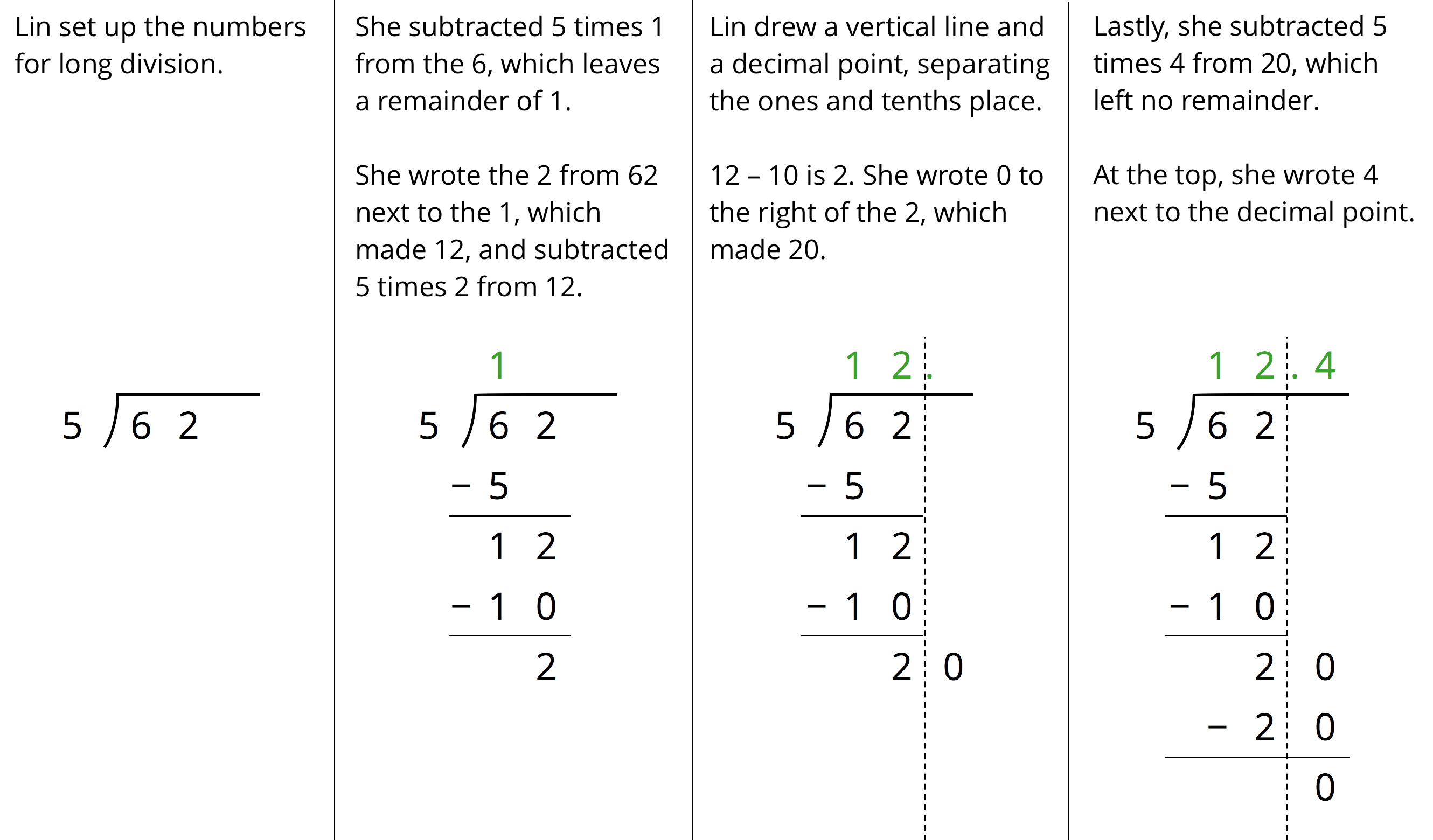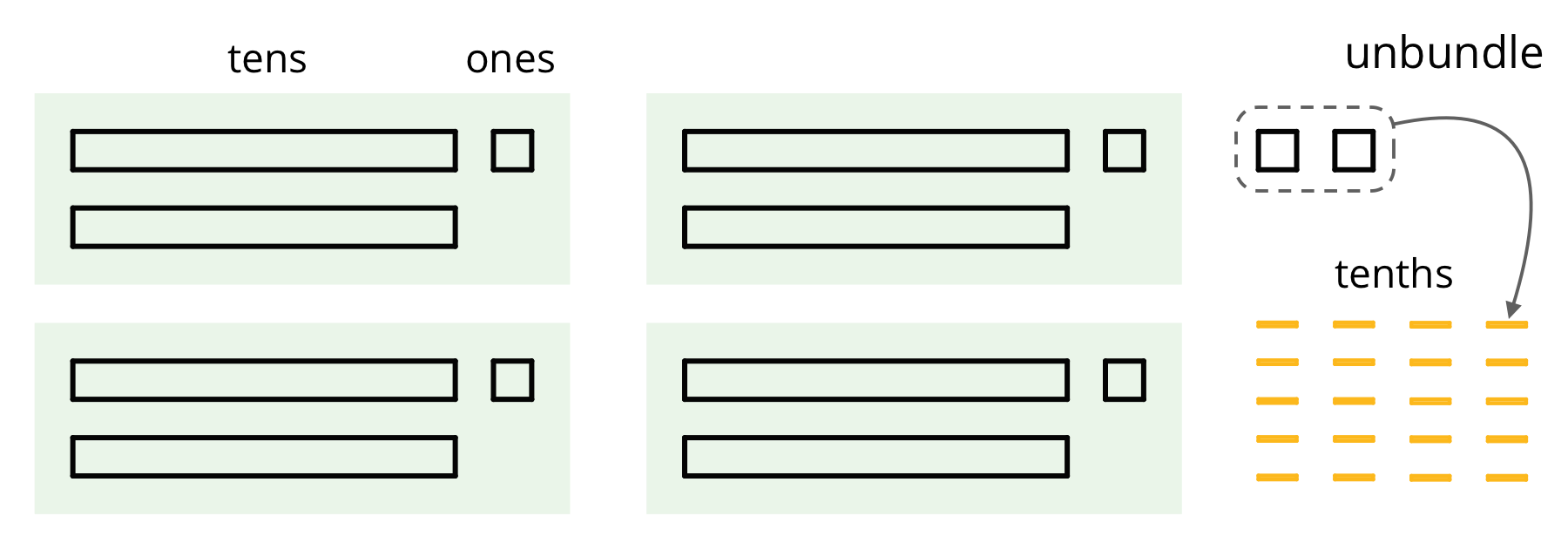11.1: Number Talk: Evaluating Quotients
Find the quotients mentally.
400\div8
80\div8
16\div8
496\div8
Let’s find quotients that are not whole numbers.
Find the quotients mentally.
400\div8
80\div8
16\div8
496\div8
Here is how Mai used base-ten diagrams to calculate 62 \div 5.

She started by representing 62.
She then made 5 groups, each with 1 ten. There was 1 ten left. She unbundled it into 10 ones and distributed the ones across the 5 groups.
Here is her diagram for 62 \div 5.

Discuss these questions with a partner and write down your answers:
Here is how Lin calculated 62 \div 5.

Discuss with your partner:
Lin put a 0 after the remainder of 2. Why? Why does this 0 not change the value of the quotient?
Lin subtracted 5 groups of 4 from 20. What value does the 4 in the quotient represent?
What value did Lin find for 62 \div 5?
Use long division to find the value of each expression. Then pause so your teacher can review your work.
Use long division to show that:
Noah said we cannot use long division to calculate 10 \div 3 because there will always be a remainder.
Dividing a whole number by another whole number does not always produce a whole-number quotient. Let’s look at 86 \div 4, which we can think of as dividing 86 into 4 equal groups.

We can see in the base-ten diagram that there are 4 groups of 21 in 86 with 2 ones left over. To find the quotient, we need to distribute the 2 ones into the 4 groups. To do this, we can unbundle or decompose the 2 ones into 20 tenths, which enables us to put 5 tenths in each group.
Once the 20 tenths are distributed, each group will have 2 tens, 1 one, and 5 tenths, so 86 \div 4 = 21.5.

We can also calculate 86 \div 4 using long division.
The calculation shows that, after removing 4 groups of 21, there are 2 ones remaining. We can continue dividing by writing a 0 to the right of the 2 and thinking of that remainder as 20 tenths, which can then be divided into 4 groups.
To show that the quotient we are working with now is in the tenth place, we put a decimal point to the right of the 1 (which is in the ones place) at the top. It may also be helpful to draw a vertical line to separate the ones and the tenths.
There are 4 groups of 5 tenths in 20 tenths, so we write 5 in the tenths place at the top. The calculation likewise shows 86 \div 4 = 21.5.